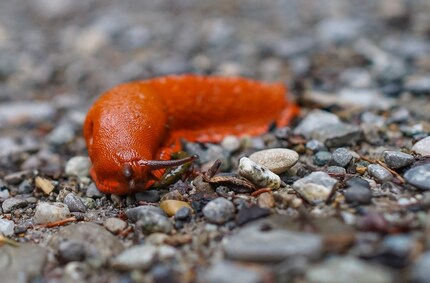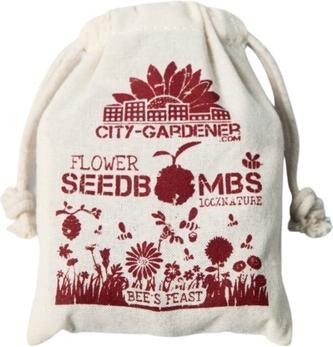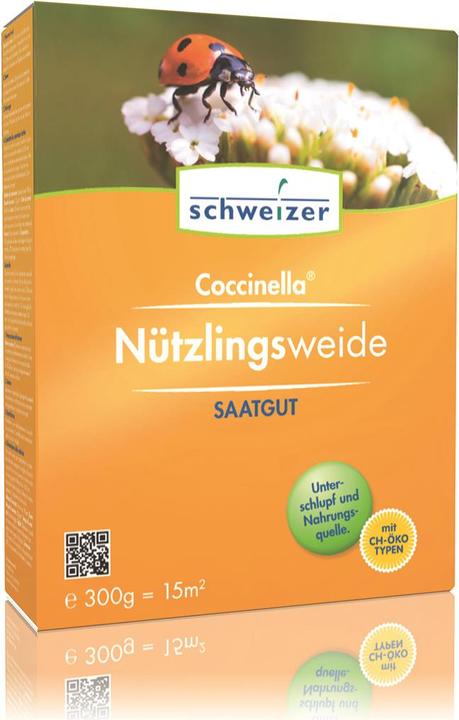

Bad or beneficial? – the impact of insects on garden and balcony plants
Do you have harmful and helpful bugs in your garden, too? I’ve found that insects can be put into two main categories. There are the little creatures that eat your plants or maybe even made them die. And then there are the little knights in shining armour who can make a whole greenfly colony disappear overnight.
What are harmful insects?
When I say harmful insects, I’m talking about those that nibble and leach on your balcony plants and flowers, that strip whole leaves or even plants bare or do severe damage to roots.

Some of the most well-known harmful insects at this latitude are beetle larvae and greenfly. Beetle larvae eat roots, while greenfly are partial to young leaves, flower buds and drinking plant juice. If there are too many larvae or greenfly on a plant, this can stunt its growth and it could fail to shoot. When there is an infestation of beetle larvae, the plant can even die.
What are beneficial bugs?
When I say beneficial bugs, I’m talking about the exact opposite. Beneficial bugs are the natural enemy of harmful insects. They help plants to grow and be healthy by eating the natural enemies or parasitising them. An example of parasitising is when beneficial bugs lay their own eggs in the progeny of harmful insects and then eat the harmful insects from the inside.

Two of the better known creatures that do this are ichneumon wasps and nematodes (roundworms). They parasitise otiorhynchus larvae and prevent otiorhynchus from eating rhododendron leaves.
Why do harmful insects exist all?
There have always been harmful insects or what you’d call guzzling insects in nature. If a particular type of insect is prevalent, it can mean its natural enemy is missing, the location isn’t the best or the plant is weakened by it. However, an excessive amount of insects can also be put down to weather conditions at the time or the plant not getting the right nourishment.
There are also plants that are just more susceptible to certain insects. It could be that an insect prefers this type of plant and isn’t interested in any of those surrounding it, as is the case with nasturtium.

The German word for pest (Schädling) came about because of the damage (Schaden) insects do when there are large amounts of them on a plant.
What can you do to prevent harmful insects?
You could, of course, just march straight into the nearest garden centre and grab an anti-pest spray. But is that the right thing to do? Are there other options? Although many sprays you can get nowadays are environmentally friendly and not harmful to beneficial bugs, you should always think before using any insecticide. Sometimes it’s enough to just wipe the harmful insects off the leaf you see them on or to give the plant a good spray with water. This is a good way of removing greenfly and caterpillars.

My experience with greenfly is that if I wait long enough, I’ll see ladybird larvae on the plant and within a few days. The greenfly population will then have significantly reduced if it hasn’t disappeared altogether. It obviously helps to have a garden or balcony that is close to nature and has its own ecosystem intact. With just a few targeted ways of looking after beneficial bugs, I can strike a balance and don’t have to interfere as much in the cycle of nature.

The most important harmful insects
There are countless insects that like to munch away at our plants. But not everyone feels the same way about them. Some people may find a single bug on a rose disgusting. Others may not mind at all and take an infestation in their stride, as long as it doesn’t damage their plants. Here are some of the harmful insects you might expect to find.
Greenfly tend to accumulate on shoot tips, buds and the underside of leaves. You can either brush them off or squash them. It’s especially good to do this if ants have already found their way into the young greenfly colony and are «milking» them.

In this milking process, the greenfly secrete what is known as honeydew, which is very popular with ants. By way of thanks for this coveted juice, the ants spread young greenfly descendants over the whole plant until they have quickly and completely infested it with greenfly.
From caterpillar to greenfly
Caterpillars have a voracious appetite and can cause considerable damage to young leaves, shoots and even full-grown plants. The good news is they’re usually easy to find and quick to count. You won’t see cabbage white butterflies and caterpillars in your garden, because they mostly leave their feeding traces on different types of cabbage – as the name suggests. What is for sure, though, is that the most unassuming caterpillars can transform into beautiful butterflies.

This is certainly the case for the swallowtail butterfly. You’ll usually find the caterpillar on carrot and fennel tops. The swallowtail butterfly is as beautiful as the caterpillar is conspicuous and unmistakable. I recommend planting more seedlings and letting the caterpillars go about their business. The freshly hatched swallowtail butterfly will thank you.

Slugs
Slugs make quick work of freshly planted seedlings in garden beds and seeds that don’t have slug protection. These ravenous beasts can demolish everything in a night. That’s why it’s so important to protect all your young plants and seeds in planting beds and pots near the ground from slugs. When you’re buying slug pellets, make sure to opt for hedgehog-friendly ones. After all, hedgehogs also have a penchant for snails.

A considerate way to combat slugs is to use a physical barrier, such as a slug fence. But do be aware you have to hunt slugs inside the fenced off area at the beginning. Checking the number of slugs at dusk is a very efficient way to keep slugs under control. It’s not everyone’s cup of tea, but it is effective in the long run. Copper wire barriers are a fairly new alternative on the market. They work well because slugs don’t like copper surfaces.
The most important beneficial bugs
Ladybirds and their larvae
If you don’t like to reach for pesticides (even the more natural ones) at the first sight of greenfly, you’ll probably soon see ladybirds and their larvae making an appearance. Admittedly, it can take a while for these to deplete the greenfly population, but it is a very efficient method.

Ladybird larvae are active greenfly exterminators. They kill off 400 greenfly over the course of their 20-day development time – but few people realise this. A fully grown ladybird gobbles up about 40 to 60 greenfly per day. Someone needs to clone them!

Earwigs
Earwigs look pretty terrifying, especially under a microscope. They are also great aphid eaters, although they do sometimes munch through young shoots and dead parts of plants as well. In comparison with the good they do, the damage is minimal.
Earwigs are nocturnal creatures that look for shelter during the day where they can feel safe and protected. They can live in cracks in walls, beneath floor boards or under foliage. They feel at home in «nesting bells» made of plants pots (see the picture further up). To build your own earwig house, fill a pot with wood shavings and hang it upside down from the treetops.


Windhager Insect hotel Trignon
Lacewings, Bumblebees, Ladybirds, Catchy tunes, Wild bees
Green lacewings
Green lacewings are known for their green bodies, incredibly delicate wings and red eyes. They are another type of insect that feeds on greenfly. As with ladybirds, it is the green lacewing larvae that feast on various insects and greenfly. That’s why they are also known as aphid lions.

Hoverflies
If a hoverfly lands on your hand, you could be mistaken for thinking you were face to face with a biting beast from the future. But on closer inspection, you quickly realise it’s just a harmless fly. The vivid and characteristic black-yellow, wasp-like markings are just a deterrent against predators. The technical term for this is mimicry.

What characterises the hoverfly is its hovering movement and its striking ability to somehow stay still in the air. It’s not a timid creature. Instead it likes to scout out its surroundings with interest – almost in a cheeky way. Hoverflies make very good beneficial bugs, as they do a lot to keep the cycle of nature flowing.
Wild wasps and hornets
Who would have thought it? Wasps and hornets are carnivorous hunters who help to keep the balance of nature. Of course it’s not always ideal to have wasps and hornets in close proximity. However, if you keep your distance from them and get to know their habits, it’s possible to live in harmony with them.

We used to have a hornet that would always zoom around the garden in the evening, taking pit stops at various flowers. There were a lot of harmful insects on those plants at the time, but they immediately disappeared. Every day it was the same. With time, I came to recognise the low hum and learnt not to bat it away – and nothing bad happened. But watch out: a lot of people are allergic to hornet and wasp stings. If that’s you, make sure to keep your distance.
You’ll see that when you give nature a bit more space, it will reclaim it straight away and thank you with a variety of insects. If you give nature a helping hand by taking a useful plant-friendly approach to gardening, you’ll be surprised at how quickly your garden or balcony turns into a little piece of paradise.
Go set your green fingers free!
You may find the following interesting (in German):
I discovered my love for gardening very early on and later turned my passion into my profession. For a few years now, I’ve been regularly writing blog posts and publishing articles in the HomeGardening section of myPfadFinder.com. This is where I give readers tips and tricks on gardens and balconies and present my latest gardening videos.
Find out more about me here: <a href="http://www.andreas-homegardening.com/" target="_blank">www.andreas-homegardening.com</a>










